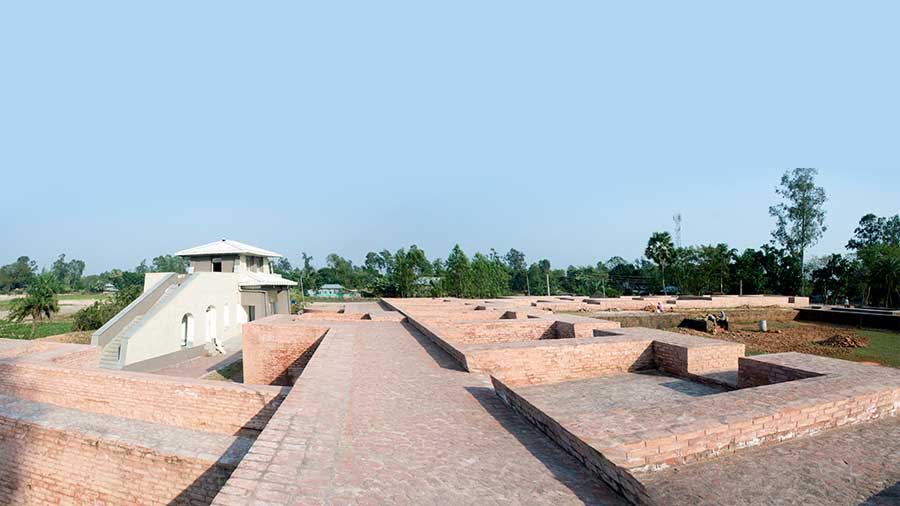The discovery of a copper plate by a farmer living in the little village of Jagjivanpur, bordering Bangladesh in the Malda district, led to a discovery that altered the socio-political narrative of Pala-era Bengal and north India.
Deciphering the plate led to the excavation of a 9th-century Buddhist monastery, Nandadirghi Vihara, about 40km east of Malda town, along with a treasure trove of historical artefacts that painted a picture of life during the Pala dynasty.

Structures including a sanctum (in picture), living quarters and a well were revealed during excavations that began in 1995 and lasted a decade
The ruins of an unknown reign
Following the plate being decoded, a preliminary search of the area surrounding Jagjivanpur led to the finding of five mounds. The information plaque at the sites states that four of these — Tulabhita, Akhridanga, Nimadanga, Maibhita — were identified as possibly having “antiquarian remains.”
Of the five, Tulabhita was the largest and most impressive, and the spot where archaeologists wanted to begin excavation. It took some time to rehabilitate the modern settlements that had come up in the area and extensive excavations began in 1995.
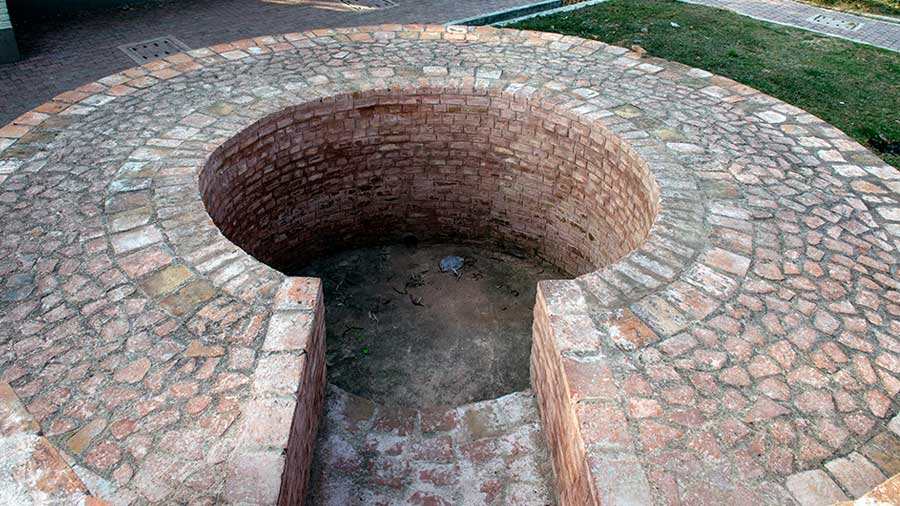
A well, discovered in the Nandadirghi Vihara complex
A decade-long archaeological project revealed a complex with a sanctum sanctorum, cells that were presumably living quarters, a well, balcony, steps, a bathroom complex, courtyard and entrance. The archaeological findings suggested that the ruins were the remains of Nandadirghi Vihara, one of the leading centres of learning in the ninth century.
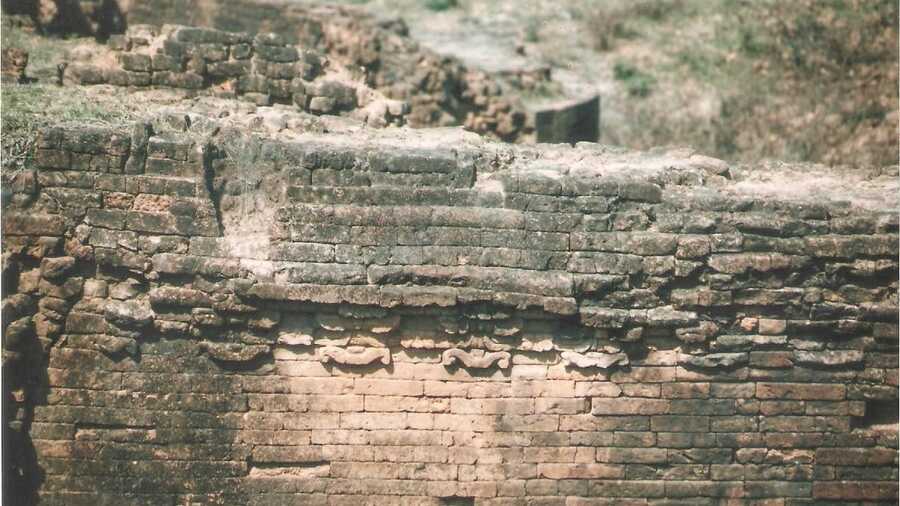
Details along the brick wall facade of the complex
The excavation also revealed a series of decorative plaques, numbering over 250, that covered a wide variety of subjects — from mythology and wildlife to scenes from daily life like domestication of animals. Among other finds was a bronze image of a seated Buddha in Bhumisparsa mudra.
Most of the plaques are in the State Archaeological Museum in Behala, where an entire gallery is dedicated to the Nandadirghi Vihara site of Jagjivanpur. A replica of the original plaque that set all this in motion is also displayed. The original plate is kept under lock and key at Malda Museum.
The story of a chance discovery
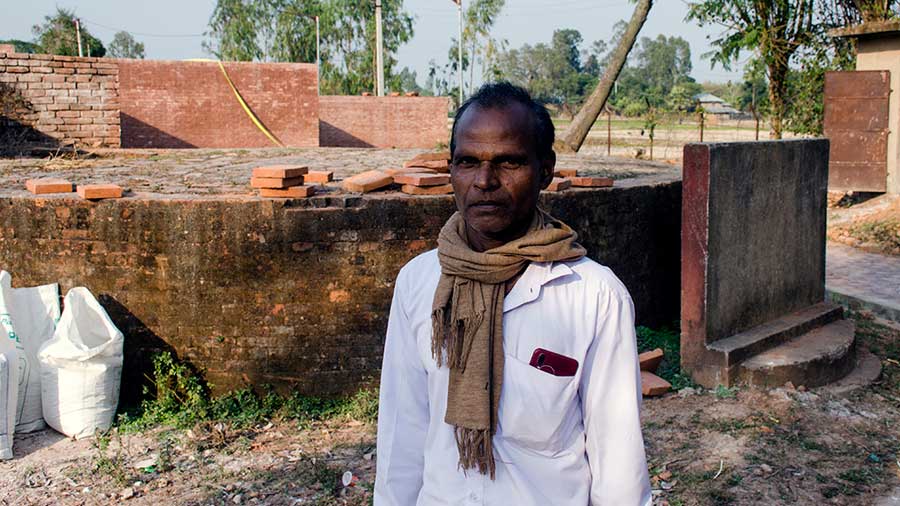
Jagadish Gayen found the copper plate in 1987, which led to the discovery of Nandadirghi Vihara
In the summer of 1987, farmer Jagadish Gayen stumbled upon a copper plate measuring 52.5cm x 37.5cm, with inscriptions on it, in the village of Jagjibanpur. Gayen had no idea what was written, but understood that he’d probably found something of historical importance and submitted the artefact to the local panchayat office.
The plate made its way to the state archaeological department and the inscriptions, written in an ancient script, detailed a charter. King Mahendrapala, who was so far unknown to historians, was bequeathed a plot of land called Nanda-dirghik-odranga by his father Devapala of the Pala dynasty, with the aim of building a Buddhist monastery. Mahendrapala is said to have ruled the region from the ninth to 12th-century AD. The discovery of this copper plate helped historians alter the accounts of the political history of Bengal and north India.
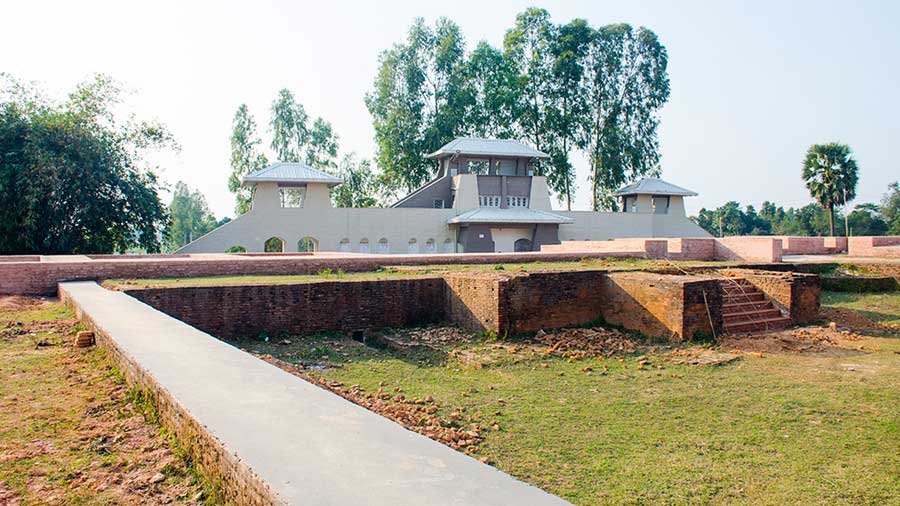
The older and the newly restored portions of the Vihara complex, with the two on-site museums
As of February 2022, restoration work is underway at the site, including the construction of two on-site museums that will house some of the artefacts found here. Witnessing the layer of lime and brick dust over the ancient structure might not be ideal, but this slice of history tucked away in a Malda village is a great place to visit, especially for history buffs.
Travel details:
-
The ruins of Nandadirghi Vihara are located 40 km east of the Malda town.
-
The nearest railway station is Malda.
-
It takes about eight to nine hours to reach Malda by road.
-
From Malda town, the best option to get to the site is by hiring a private vehicle.
-
A visit to Nandadirghi Vihara can be part of a historical tour of Malda, covering the more famed medieval architecture of the twin citadels of Gour and Pandua.
The ruins of Nandadirghi Vihara are located 40 km east of the Malda town.
The nearest railway station is Malda.
It takes about eight to nine hours to reach Malda by road.
From Malda town, the best option to get to the site is by hiring a private vehicle.
A visit to Nandadirghi Vihara can be part of a historical tour of Malda, covering the more famed medieval architecture of the twin citadels of Gour and Pandua.


